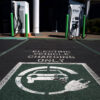It’s amazing how far school choice options have come in a little more than two decades. From Milwaukee’s first-in-the-nation school voucher option in 1990 and the first charter school opening its doors in Minnesota in 1992, parental choice in education has advanced considerably, and innovation in school choice policy has taken shape in ways that were inconceivable in those early years. Today, 39 private school choice programs operate in 18 states and Washington, D.C.
The past three years in particular have produced some of the most exciting advancements in school choice policy to date. In 2011, Arizona Gov. Jan Brewer signed into law the nation’s first education savings account program. ESAs are parent-controlled savings accounts that enable families to completely customize their children’s educational experiences.
Parents of eligible students can have 90 percent of the funding the state would have spent on their children in their assigned public school deposited directly into their ESAs. Funds are deposited onto a restricted-use debit card, which parents can use to pay for a wide variety of education-related services and products. ESA funds can be used to pay for private school tuition, online learning, textbooks, curricula, special education services and a host of other education-related expenses. Parents can even roll unused funds into a college savings account.
And because parents direct every dollar of their ESA funds to options that fit their child’s learning needs, providers must provide quality products and services at competitive rates, which puts downward pressure on prices not only for schools but for all eligible education products.
For instance, parents could pay for private school tuition for a half-day, then use the debit card for tutoring in the afternoon. They might even finance educational therapies one day a week, as Kym Wilber, mother of 8th grader Zach does. “I have a private tutor for Zach, and I can use [ESA] funds for that,” Wilber says. “With the ESA, I can actually go out and buy things for our home program, such as additional speech tools.”
The Wilbers’ experience mirrors that of many who take advantage of Arizona’s ESA option. Although many families use their ESAs in a manner similar to a traditional school voucher, more than one-third of parents use their funds to completely customize their children’s educational experience. Some, in fact, eschew traditional brick-and-mortar schools altogether and instead purchase curricula and textbooks and then hire private tutors to create a made-to-order learning experience for their children.
A parent-led Yahoo group—an Internet message board where families discuss their experiences with their ESAs—is an example of the extent to which parents want to be involved to the greatest extent possible with their children’s education. It is, as the parents describe, a place to “share ideas, questions and information with each other as we make exiting, individual educational decisions” for their children.
When it was enacted in 2011, the Arizona ESA option was available only to children with special needs. Every year since has brought expansions to the program. Today, children with special needs as well as children from active duty military families, children of fallen soldiers, children in Arizona’s foster care system and children from low-income families assigned to underperforming public schools are eligible for the accounts.
Just as parents have looked to one another in the ESA program for advice about what works well for their children, so too have states begun to take cues from one another, replicating the most promising policy innovations. Last week, the Florida legislature passed legislation to create the Florida Personal Learning Scholarship Accounts—the Sunshine State’s version of ESAs. Florida would become the second state to embrace the most innovative option to date in school choice.
The combination of innovative education financing models such as ESAs, in conjunction with the growth of online learning, allows for education options that are truly customized and student-centered and are a far cry from the one-size-fits-all public education system. School choice policy has come a long way over the past two decades, and as Arizona’s experience has demonstrated, ESAs are the way of the future as states consider how to bring innovation, competition and choice into their education systems.
Lindsey M. Burke is the Will Skillman fellow in education policy at The Heritage Foundation. Her column appears on The Foundry every other Monday.





























